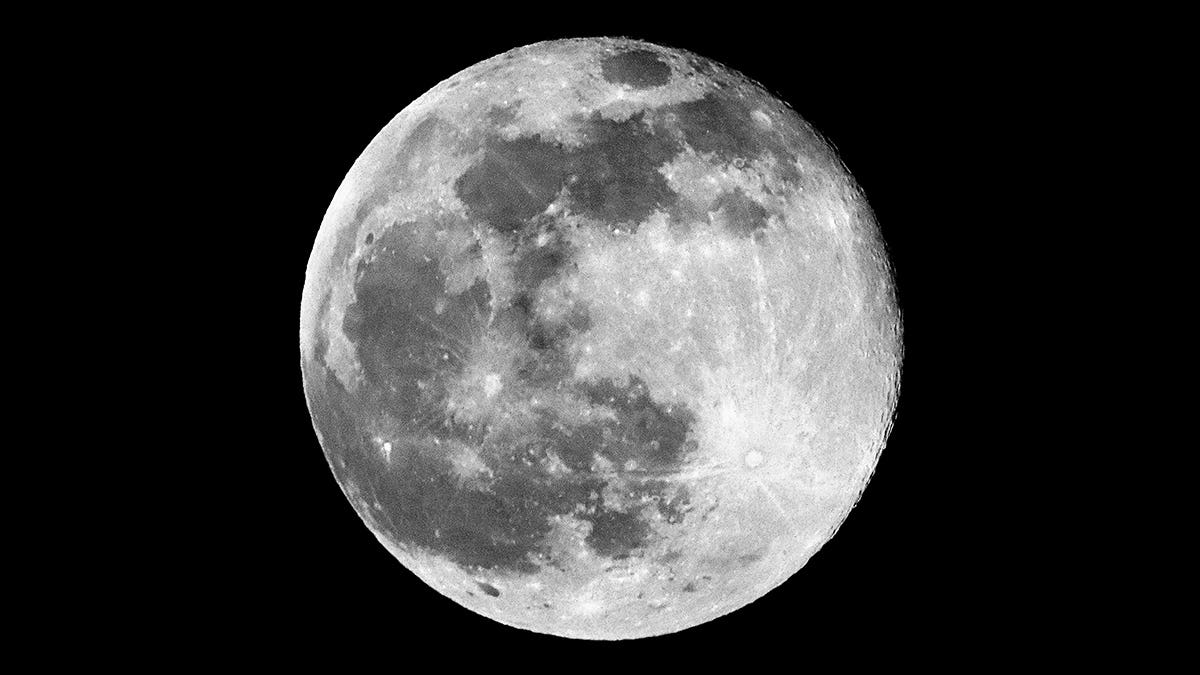Massive buried structure found under the Moon’s largest crater
Scientists find massive buried structure under Moon’s far side, possibly asteroid metal, offering clues to early solar system impacts.

Astronomers discover a vast, dense mass buried beneath the Moon’s largest crater. (CREDIT: Airwolfhound / Flickr, CC BY-SA 2.0)
The Moon has always held a certain mystery, especially its far side, hidden from Earth’s view. While telescopes and astronauts have revealed much about its surface, recent research has uncovered something astonishing buried deep beneath it—a massive, dense formation unlike anything seen before. The find could change how you understand not just the Moon’s history, but the violent events that shaped the entire solar system.
A giant hidden beneath the far side
Beneath the South Pole-Aitken basin—the Moon’s largest preserved impact crater—lies a vast, unexpected mass stretching over 300 kilometers deep and spanning 2,000 kilometers in length. This formation weighs at least 2.18 × 10¹⁸ kilograms, equivalent to burying a pile of metal five times larger than the Big Island of Hawaii.
The basin itself is enormous, stretching roughly the distance from Waco, Texas, to Washington, D.C., and plunging several miles deep. Despite its size, you cannot see it from Earth because it lies on the far side. The discovery was announced in the journal Geophysical Research Letters by Peter B. James, a planetary geophysics professor at Baylor University.
“When we combined lunar gravity data with topography, we found a huge amount of extra mass hundreds of miles under the basin,” James said. “One explanation is that metal from the asteroid that created the crater is still embedded in the Moon’s mantle.”
How scientists uncovered the buried mass
The find became possible thanks to NASA’s Gravity Recovery and Interior Laboratory (GRAIL) mission. GRAIL measured minute variations in the Moon’s gravitational field using twin spacecraft, allowing researchers to create an extremely precise map of mass distribution beneath the surface.
This was paired with measurements from the Lunar Orbiter Laser Altimeter (LOLA) aboard the Lunar Reconnaissance Orbiter. Together, these datasets revealed not just the size of the basin, but also that its floor is pressed downward by more than half a mile under the weight of the dense material.
Related Stories
- Researchers surprised to discover what’s inside the moon’s core
- Planetary scientists reveal how the Earth and Moon actually formed
Computer simulations suggest that during a giant impact, the iron-nickel core of a large asteroid can scatter into the upper mantle—the layer between crust and core—rather than sinking all the way to the center. James’ calculations show that such material could still be there today, locked in place for over four billion years.
The Moon’s ancient scar
The South Pole-Aitken basin is thought to have formed about 4 billion years ago, during an era of heavy bombardment when asteroids and protoplanets crashed into the inner planets and their moons. While larger impacts may have happened elsewhere in the solar system, geological activity has erased most traces. The Moon, lacking significant atmosphere, water, or tectonic activity, preserves scars that Earth cannot.
James calls the basin “one of the best natural laboratories for studying catastrophic impact events,” giving scientists rare insight into the processes that shaped the rocky worlds you see today.
Despite the colossal impact that carved it out, parts of the basin’s present-day crust remain at least 16 kilometers thick. This suggests that after the initial excavation, molten rock may have flowed back in and solidified, reshaping the surface while leaving deeper structures intact.
Another possible origin
While the asteroid-core theory is compelling, it’s not the only explanation. The mass might also be a concentration of dense oxides that formed in the Moon’s final stages of cooling. Early in its history, the Moon likely had a global magma ocean. As it cooled and minerals crystallized, heavier materials may have sunk into localized pockets within the mantle.
In either case, the formation’s size and density make it an important clue in reconstructing the Moon’s early evolution.
Precision mapping of the basin
The shape and boundaries of the South Pole-Aitken basin have been redefined using the latest data. Earlier measurements from the 1990s Clementine mission had gaps in coverage, particularly near the lunar south pole. The LOLA instrument filled those gaps, providing nearly seven billion precise topography points.
Scientists used these measurements, along with GRAIL’s gravity data, to create “best fit” ellipses outlining the basin’s rims. These reveal subtle differences between its topographic edge and crustal thickness boundaries, offering a more complete picture of how the impact reshaped the Moon’s surface layers.
Why the far side matters
Because the basin sits on the far side, you can’t observe it directly without orbiting spacecraft. This region is especially valuable for exploration because it has not been resurfaced by the extensive volcanic activity seen on the Moon’s near side. Its untouched geology preserves a clearer record of early solar system events.
The basin’s location also makes it a prime target for future lunar missions. A lander or rover could study exposed mantle materials and collect samples that have been shielded from space weathering for billions of years. These could reveal not only the Moon’s internal composition but also chemical fingerprints of the impacting asteroid.
GRAIL’s continuing legacy
The precision of the GRAIL mission has reshaped how scientists study planetary interiors. By mapping gravity fields to resolutions as fine as seven kilometers, GRAIL has shown that subtle mass variations can point to hidden geological features—whether ancient impact remnants, buried volcanic structures, or mantle anomalies.
In the case of the South Pole-Aitken basin, the data suggest that the dense mass is more than just a gravity “hot spot.” Its scale, depth, and persistence across geological time make it one of the most intriguing finds since humans first began studying the Moon up close.
Looking ahead
The discovery adds weight to the idea that the Moon’s mantle still contains relics from the solar system’s earliest, most violent chapter. Whether this mass is the frozen heart of an ancient asteroid or the remains of a deep chemical segregation, its presence tells you that the Moon’s interior has not been completely mixed over time.
For planetary scientists, this means the far side holds a treasure trove of information—not only about the Moon itself, but about Earth’s own hidden history. Since Earth’s surface has been reshaped countless times by erosion, volcanism, and plate tectonics, the Moon offers a preserved record of events we can no longer read here at home.
Future missions may aim to drill or penetrate the basin’s surface to reach mantle material. Coupled with sample-return technology, such efforts could finally solve the mystery of the buried mass. Until then, this giant beneath the Moon’s far side remains an enduring reminder of how much is still hidden, even in places you think you know well.
Note: The article above provided above by The Brighter Side of News.
Like these kind of feel good stories? Get The Brighter Side of News' newsletter.



